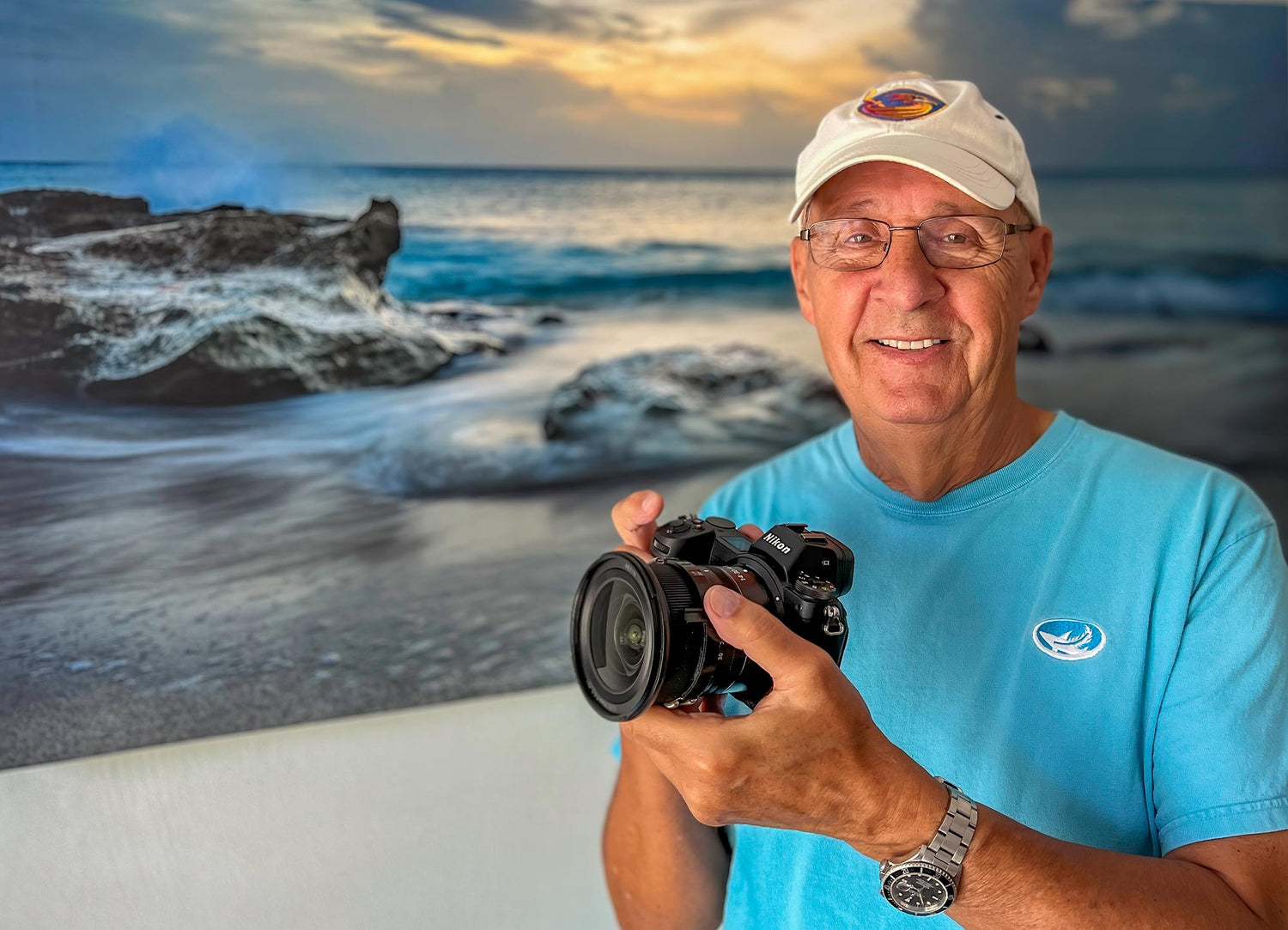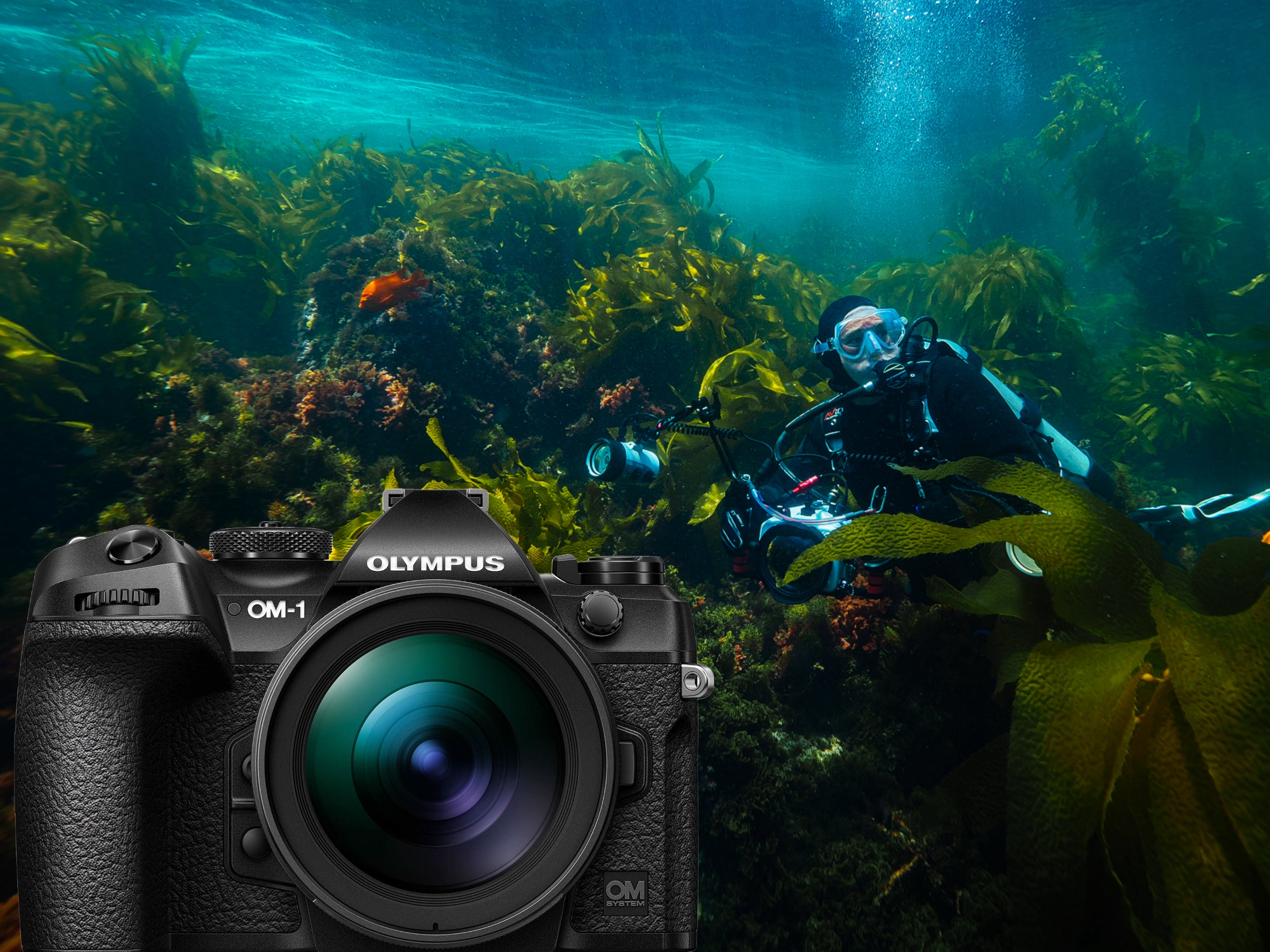By Glenn Ostle
Three years ago, I wrote an article for this newsletter about my experience switching from a DSLR (Digital Single Lens Reflex) camera to a mirrorless camera. At that time, mirrorless cameras were still in their infancy and there was a lively debate within the industry as to whether they would -- or could -- ever replace traditional optical-based cameras.
As I was most familiar with Nikon products, I chose the 24.5-megapixel Nikon Z6 as my first mirrorless camera. It was one of the company’s first full-frame mirrorless, interchangeable lens models and, at the time, one of the few such cameras on the market.
Three years later the landscape has changed dramatically.

This photo of a bee in flight, demonstrates several advantages of the mirrorless camera. First, it was easier to track the bee as it few close by, using the LCD screen on the back. And secondly, I’m very pleased with the sharpness of this picture taken of a small flying creature from a distance. Settings: 1/800 • f5.6 • ISO 500 © 2022 Glenn Ostle
My Z6 has been upgraded, and Nikon as well as Canon, have introduced a number of new mirrorless models while gradually discontinuing, or just not updating, some of their DSLR cameras. In addition, a number of impressive new mirrorless cameras have been introduced by companies including Sony, Panasonic, Fujifilm, Leica, and Olympus, to name just a few.
The new cameras are light, fast, powerful, and easy to use. As a result, the difference between them and DSLRs has narrowed, and more and more photographers are making the change in order to take advantage of new technology.
Here are just a few ways that switching to a mirrorless camera has changed, and improved, my photography.

Being able to see the effect of changing settings in real time on the LCD screen lets you see what the final image will look like before you take the picture. This works well with sunsets and other fast changing scenes. Settings: 1/800 • f/11 • ISO 1000 © 2022 Glenn Ostle
Size matters
When traveling, every ounce counts. The new smaller and lighter mirrorless cameras are easier to pack and carry. And new lenses developed just for them, are shorter and lighter which helps further reduce overall weight. Now, when packing for a trip, I try to extend this “pack lighter” approach by taking a harder look at what I really need. Can I take fewer lenses? Can I get away with only taking my mini dome? Do I really need all this extra stuff that I usually take along?

My Z6 offers the capability to take in-camera double exposures such as this one taken in Botswana, Africa. It is nice to occasionally be able to take a “different kind” of photo. This technique can also work underwater. So, if your camera has this capability, read up on it and give it a try the next time you dive. Settings: 1/1000 • f/18 • ISO 1600 © 2022 Glenn Ostle
What you see is what you get
The big change in mirrorless cameras is the incredibly sharp focus provided by the EVF (electronic viewfinder), and the usefulness of the large LCD rear screen.
Unlike cameras that use an optical viewfinder, EVFs display the image directly from the sensor which lets you see exactly what the camera sees.
When “live mode” is turned on it is possible to immediately see the effect of adjusting settings like f-stop, shutter speed and ISO, before taking the picture. And when photographing in darker settings where the strobes will account for most of the light, “live view” can be turned off which allows you to see a bright, clear image.
In both cases, the final image can be viewed either through the viewfinder or on the large rear LCD screen.

Shooting using the screen on the back of the camera, lets you compose the scene while also keeping a close eye on what is happening around you. The LCD screen is big and bright and provides a corner-to-corner view of the image. And as the effect of changing exposure settings shows immediately on the screen, what you see is what you get. Settings: 1/200 • f/8 • ISO 100 © 2022 Glenn Ostle
I’ve found that today I am using “live view” more and more, especially for mid- to wide-angle shooting. I also like having the ability to switch automatically between viewing the image through the viewfinder or on the rear LCD screen.
Holding the camera at arm’s length gives me a real-time view of the action and allows me to compose the photo on the LCD screen, without having my face jammed up against the camera. That’s important when photographing large animals like sharks, whales, or rays when you need to keep a sharp eye on what is going on around you.
I’ve also found that using a mirrorless camera this way feels very familiar as it is similar to the way we all take pictures with the camera app on our mobile phones.

Using the adapter with my mirrorless camera, I am still able to use older valuable lenses like the Nikkor 8-15mm fisheye lens that was used for this long exposure night shot taken in Moorea, French Polynesia. Camera settings: 30 seconds • f4.5 • ISO 2000 © 2022 Glenn Ostle
Take a quick look
By pushing one button it is possible to zoom in on a subject to take a closer look or to confirm focus. This helps a lot with macro shooting and can often eliminate the need to pack an external viewfinder.
Lens choice
More new, lightweight lenses are being announced every day. But in the meantime, most mirrorless cameras come with an adapter that provides a way to use earlier model lenses. For instance, my adapter allows me to still be able to use valuable lenses like my AF-S Nikkor 105mm macro or the Nikkor 8-15mm fisheye lens.

By using the lens adapter on my mirrorless camera, I am able to use older valuable lenses. This allowed me to use my Nikkor 105mm macro lens to take this picture of a tiny isopod that attached itself to the front of this unsuspecting Soldierfish. Settings: 1/200 • f/6.3 • ISO 800 © 2022 Glenn Ostle
Speedy bursts
While both DSLR and mirrorless cameras can take photos at very fast shutter speeds, a mirrorless camera’s simpler mechanics enables it to shoot much faster at full resolution and with continuous focus.

Both DSLRs and mirrorless cameras can take a series of photos at fast shutter speeds, but a mirrorless camera’s simpler mechanics enables it to shoot much faster at full resolution and with continuous focus. Settings: 1/160 • f8 • ISO 1250 © 2022 Glenn Ostle
Lights, action, camera
Most high-end mirrorless cameras have the ability to shoot super high-resolution video, including 4K, which can be viewed in real time by looking through the viewfinder or at the LCD screen. Because this is available by simply flipping a switch, I find that I’m now shooting more video than ever before.
These are just a few reasons why I enjoy shooting mirrorless. Other features that I also rely on with my Z6 include its high-ISO performance, low-light focusing capability, a way to shoot creative in-camera double exposures, and the option for truly silent operation.

This over/under photo was taken early in the morning in Moorea, French Polynesia, using the Nikkor 8-15mm fisheye lens. It was taken at an amazing 32,000 ISO. After post-processing, the image is still “noisy” in spots, but it demonstrates the ability of my mirrorless camera to handle high ISOs. And I think the muted, arty effect in the lower portion actually adds to the photo. Camera settings: 1/640 • f/25 • ISO 32,000 © 2022 Glenn Ostle
With more mirrorless cameras being announced each day, and more and more photographers making the switch, the future certainly seems to be moving in the mirrorless direction. However, in fairness there are still a number of excellent DSLR cameras being used by photographers, many of whom don’t have any intention of switching. They point to advantages such as much longer battery life, the ability to view subjects optically rather than electronically, and their familiarity with their camera based on long use.
Ultimately, what type of camera you settle on is a personal choice. So, the best way to make the decision about what system to use is to weigh the advantages and disadvantages of each and then ask yourself what makes you most comfortable.
With the hi resolution video capability of mirrorless cameras, along with the ability to change from shooting stills to videotaping with a single switch, I find myself shooting a lot more video than ever before. © 2022 Glenn Ostle
 Glenn Ostle is an Ikelite Ambassador located in Charlotte, North Carolina. For almost 30 years he and his partner, Pam Hadfield, have traveled the world pursing their interest in underwater, wildlife and bird photography. Glenn’s photos and articles have appeared in a number of dive and travel magazines. See more of his work at: featherandfins.smugmug.com
Glenn Ostle is an Ikelite Ambassador located in Charlotte, North Carolina. For almost 30 years he and his partner, Pam Hadfield, have traveled the world pursing their interest in underwater, wildlife and bird photography. Glenn’s photos and articles have appeared in a number of dive and travel magazines. See more of his work at: featherandfins.smugmug.com
Want the easy way to improve your underwater photography? Sign up for our weekly newsletter for articles and videos directly in your inbox every Friday:
Additional Reading
In the Water with the Nikon Z6 Full Frame Mirrorless Camera
Sharp Shooting: Developing Underwater Photography Skills on Safari
Gray Whales, Blue Water | Photographing Humpback Whales in Moorea
Maintaining Your Macro Eye | Using Underwater Techniques on Land
Cousteau's Aquarium | Sea of Cortez with the Nikon Z6
Using the Tokina 10-17mm Fisheye Sony APS-C Mirrorless and DLM/A Port Mount
Worth The Upgrade | Canon EOS R5 and R6 Full Frame Mirrorless Underwater [VIDEO]












![Canon Rebel SL3 Underwater in Grand Cayman [VIDEO]](http://www.ikelite.com/cdn/shop/articles/Chase_Darnell_SL3.jpg?v=1657743869&width=2000)
